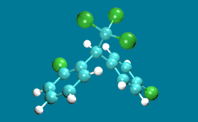 |

|

|
|

|
 |
|
Some chemicals implicated so far This page outlines some of the chemicals that have been implicated as hormone disrupters. Note that due to the large quantity of research now being published, and the plethora of chemicals implicated in some way, it is not possible for to list every chemical. In addition, it is not always possible to keep all the specific chemical pages totally up to date.The chemicals are divided into three groups, 'Industrial Chemicals', 'Natural Hormones', and 'Pesticides'.
Phthalates This group of chemicals are very widely used as plasticisers in plastics such as PVC, but some of them are also testicular toxins and can disrupt hormones. Alkylphenols Alkylphenols and their derivatives have a variety of uses, including as industrial detergents and, outside Europe, as domestic detergents . They have been shown to be oestrogenic in many systems. Bisphenol A An ingredient of lacquers that are used in dental treatment, and to coat metal containers such as food cans. It has been shown to leach from these cans into vegetables, and it is oestrogenic to human breast cancer cell cultures. Polychlorinated biphenyls (PCBs) and Dioxins Dioxins are often produced during incineration, and also by some industrial processes, such as the production of chlorinated hydrocarbons and paper production. PCBs were used in electrical equipment such as transformers, but were banned some years ago. However, a large quantity of PCBs is still present in transformers and capacitors. Brominated flame retardants Brominated flame retardants are a group of chemicals that are used in plastics and textiles to give flame retardant properties. Many of them are persistent and bioaccumulative, and several are hormone disrupters. Parabens A group of chemicals used as preservatives in cosmetics, and in some antibacterial toothpastes. Several chemicals in the group are oestrogen mimics. Butylated hydroxyanisole Butylated hydroxyanisole (BHA) is a food antioxidant. It is slightly oestrogenic to breast cancer cells, binds rainbow trout oestrogen receptor and stimulates transcriptional activity of the human oestrogen receptor (Jobling et al., 1995).
Phytoestrogens Phytoestrogens are natural hormones present in many plants, and
in particularly high levels in Pollution by female hormones Research in the UK has found that sewage effluents, and in some cases rivers, were oestrogenic, causing the production of the egg yolk protein in male trout. These hormones are naturally excreted, in a conjugated form, in the urine of women; bacteria in the sewage works then re-activate the hormones (Panter et al., 1999). The research also detected estradiol, from the contraceptive pill, in some cases, but the natural oestrogens were always more important.
A large number of pesticides have been identified as possible or definite endocrine disrupters, many of the pesticides implicated are described below.
The insecticide DDT has been banned in the developed world for many years, though is in widespread use in the developing world. Various DDT metabolites have endocrine effects, including blocking the action of male hormones. Lindane Lindane is a pesticide which is under a great deal of regulatory pressure around the world. On July 13th 2000 an EU regulatory committee voted to ban agricultural uses of Lindane in Europe - though it can still be used in some other products, such as ant killer. It is a persistent pollutant, and is found in human breast milk. The estrogenic properties of lindane have been demonstrated in several systems, including the production of egg yolk protein and egg shell protein in liver cells from Atlantic salmon. Lindane has also been shown to damage human spermatozoa at concentrations as low as those found in female genital tract secretions. Vinclozolin Vinclozolin is a fungicide and is a proven endocrine disrupter, causing anti-androgenic ('anti-maleness') effects. Exposure of male rats in the womb and shortly after birth to low doses of vinclozolin leads a range of sex organ changes, including retained nipples, reduced ejaculated sperm numbers and reduced ventral prostate weight . Young male rats exposed to vinclozolin showed delayed puberty. These anti-androgenic effects are due to two of its metabolites (breakdown products), which are able to bind the androgen receptor (including the human androgen receptor), blocking its activity. Carbendazim Carbendazim is a fungicide. It disrupts the production of sperm
and damages testicular development in adult rats, probably partly
through disrupting the assembling of cells in tissues which is the
same way as carbendazim works as a Benomyl Benomyl is a fungicide, that is metabolized into carbendazim, see above. Procymidone Procymidone is an anti-androgen, with anti-maleness properties similar to vinclozolin. It is able to block androgen binding to the human androgen receptor, and male offspring of rats exposed to procymidone during pregnancy and early lactation showed a range of reproductive deformities, such as permanent nipples and malformed penises. Chlorpyrifos Chlorpyrifos is a organophosphate insecticide, and has been listed as a potential endocrine disrupter by the German Federal Environment Agency, who report that it is linked to male and female genital deformities. Chlorpyrifos is a neurotoxin, and exposure to low concentrations can affect brain development in rats. Chlorpyrifos has also been shown to affect the thyroid system in ewes, reducing blood thyroxine concentrations. Deltamethrin Deltamethrin is a pyrethroid insecticide and has been listed as
a potential endocrine disrupter by the German Federal Environment
Agency, who report that it can affect sperm and the placenta. Dimethoate Dimethoate is an organophosphate insecticide and has been listed as a potential endocrine disrupter by the German Federal Environment Agency. Dimethoate caused testicular damage, damage to sperm production and reduction in testosterone levels when fed to adult male rats. Dimethoate also resulted in decreased thyroxine concentrations in ewes, and affected thyroid metabolism in mice. Carbofuran Carbofuran is a carbamate insecticide and has been listed as a potential endocrine disrupter by the German Federal Environment Agency. Carbofuran caused sperm and reproductive system damage when fed to either adult male rats or to developing male rats exposed in the womb. Damage to sperm production was also seen when adult rabbits were exposed to carbofuran. Carbofuran has also been shown to affect the thyroid system in ewes, resulting in increased thyroxine concentrations. Amitraz The insecticide Amitraz has been shown to disrupt oestrus in rats,
due to amitraz binding the a-noradrenergic receptors and blocking
the action of norepinephrine. Trichlorfon The organophosphate insecticide Trichlorfon has been listed as a potential endocrine disrupter by the German Federal Environment Agency, who report that it can cause mammary tumours and affect sperm and egg production.A cluster of Down's syndrome children in Hungary was associated with consumption of fish from a local fish farm after the fish had become excessively contaminated by trichlorfon. A degradation product of trichlorfon, dichlorvos, has been shown to damage immune system function in humans; trichlorfon itself damages immune function in Carp. Penconazole The fungicide Penconazole has been listed as a potential endocrine disrupter by the German Federal Environment Agency, who report that it can affect thyroid, prostate and testes weight. Prochloraz The conazole fungicide Prochloraz has been listed as a potential endocrine disrupter by the German Federal Environment Agency, who report that it can affect pituitary weight. Propiconazole The conazole fungicide Propiconazole has been listed as a potential endocrine disrupter by the German Federal Environment Agency, who report that it can affects steroid metabolism. Tridemorph The morpholine fungicide Tridemorph has been listed as a potential endocrine disrupter by the German Federal Environment Agency, who report that it is linked to cystic ovaries. Tridemorph is a potent inhibitor of the human sterol isomerase enzyme, which is part of the cholesterol biosynthesis pathway. Epoxyconazole Epoxyconazole is a fungicide that has been listed as a confirmed endocrine disrupter by the German Federal Environment Agency, who report that it can have effects on sex hormone balance and cause ovarian tumors. Metiram The dithiocarbamate pesticide Metiram has been listed as a confirmed endocrine disrupter by the German Federal Environment Agency, who report that it can reduce levels of thyroid hormones. Oxydemeton-methyl Oxydemeton-methyl has been listed as a potential endocrine disrupter by the German Federal Environment Agency, who report that it can affect egg production and testis and ovary size. Atrazine The herbicide atrazine has been shown to affect reproductive system development in rats. Mothers were dosed with atrazine and their offspring showed a delay in vaginal opening in the females and a higher incidence of prostate inflammation in the males. Atrazine has also been shown to affect hormone metabolism in women, which may have possible implications for breast cancer - see DDT for more details. Linuron Linuron is a urea-based herbicide which has been shown to have
a weak affinity for the androgen receptor. A multi-generation study
with rats dosed with Linuron led to a range of male reproductive
tissue problems in offspring, including testicular malformations
and reduced size of androgen-dependant tissues. Other pyrethroids Research using the MCF-7 human breast carcinoma cells line has found that the pyrethroid insecticides sumithrin, fenvalerate are oestrogens, permethrin is a weak estrogen and d-trans allethrin may be an anti-estrogen. |
||
| Contact Us | About Us | Copyright ©2003 | ||
 Industrial
Chemicals
Industrial
Chemicals Natural
Hormones
Natural
Hormones soya.
soya.
 Pesticides
Pesticides DDT
DDT fungicide. In addition, carbendazim is also a teratogen damaging
development of mammals in the womb. Experiments have shown that
exposure of developing rats in the womb leads to deformities such
as lack of eyes and hydrocephalus ("water on the brain").
fungicide. In addition, carbendazim is also a teratogen damaging
development of mammals in the womb. Experiments have shown that
exposure of developing rats in the womb leads to deformities such
as lack of eyes and hydrocephalus ("water on the brain"). Research
has shown that chronic exposure of adult rats to deltamethrin causes
the death of some testicular cells.
Research
has shown that chronic exposure of adult rats to deltamethrin causes
the death of some testicular cells.
